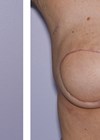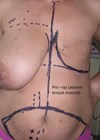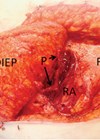The authors review and analyse the current literature comparing the psychosocial outcomes of immediate versus delayed post mastectomy breast reconstruction.
Breast cancer is the most prevalent cancer in women and has a lifetime incidence of one in nine. Mastectomy may be accompanied by neo-adjuvant and adjuvant therapy. Breast reconstruction is an integral part of treatment of breast cancer and could be performed either at the time of mastectomy, immediate breast reconstruction (IBR), or at a later stage, delayed breast reconstruction (DBR).
Outcomes such as psychosocial morbidity, aesthetics and complication rates may differ between the two approaches. Although there is no universal consensus on the superiority of either approach, there is evidence to support the fact that the aesthetic result, psychosocial effect, and cost of breast reconstruction are better with immediate reconstruction, but the risk of surgical complications is less with delayed reconstruction.
Aims and methods
The purpose of this article is to review and analyse the current literature comparing the psychosocial outcomes of both approaches, IBR and DBR.
An online search was performed using Pubmed, Embase and Medline databases, to identify articles related to breast reconstruction. All articles assessing psychosocial and other related outcomes were collected and reviewed. Only articles reported in English were included. The first author screened papers, extracted trial details and performed the literature review and analysis. Postoperative morbidity and mortality were not addressed.
Psychological distress is evident among women regardless of reconstruction or timing of reconstruction. Psychosocial outcomes are variable, and include quality of life, sexual functioning, cancer-related distress, body image, depression and anxiety. There is a greater body of evidence, though unreliable, to support the relatively higher psychosocial outcomes in the IBR group compared to the DBR, and in the reconstruction group compared to the non-reconstruction group. However, a recently developing evidence base is also suggesting relative superiority of DBR in certain aspects of these variable psychosocial outcomes.
In the literature search, only one randomised clinical trial (RCT) compared IBR to DBR. The data suggests that women presenting for mastectomy and breast reconstruction at different stages of reconstruction have a different psychosocial baseline. Such data, and encouragement of further larger prospective studies, will improve our understanding in patient selection and expectation, and decision making on appropriate timing of reconstruction. However, this must be put into the context of the clinical needs of the patient and logistic demand of the system managing these patients.
Background
The aim of surgical treatment of breast cancer should not just be to cure or reduce the tumour, but to gain the best aesthetic results with the best psychological and physical impact. Mastectomy is associated with significant psychosocial sequelae including distorted body image, emotional disturbances and sexual dysfunction [1]. Breast reconstruction, described as a ‘reverse mastectomy’ is assumed to help in restoring emotional and physical recovery following breast cancer treatment, though it has its own lineal and psychosocial sequelae [2].
The psychosocial, emotional and functional adaptations of breast reconstruction post mastectomy have been extensively studied over the last few years [3,4]. Previous studies have demonstrated the positive effects on psychological health, self-esteem, sexuality, body image and reduced concerns of cancer recurrence [5,6]. Breast reconstruction has been reported in the literature to be one of the most relevant factors for long-term health and well-being [7,8]. However, other studies have reported specific predictive factors for higher risk of depression and anxiety; De Raaff et al. reported in their literature review that patients who underwent breast reconstruction were younger, had less hypertension, and had undergone adjuvant chemotherapy more often, and claimed that these findings are in accordance with data from previous literature [9]. On the other hand, they reported that the household type, level of education and hormonal / endocrine therapy predicted a higher risk of depression. Finally, they concluded that these predictive values are consistent with literature which demonstrated that married status showed a lower risk of depression when compared to a non-married status, lower social economic status (often including a low educational level) appears a predictor of developing depression, and depression is a known side-effect of hormonal therapy [9].
Reconstruction can be accomplished with autologous tissue flaps, prosthetic breast implants, or a combination of both, and can be carried out at the time of the mastectomy (IBR) or after some months or even years have elapsed (DBR) [10].
Psychosocial outcomes in reconstructed versus non-reconstructed breast patients
Reconstruction group (IBR and DBR) versus non-reconstruction group
Earlier studies have suggested a variety of positive psychosocial outcomes of breast reconstruction, most importantly improved body image [11,12], social well-being [13] and sexuality [14]. However, few of these studies assessed the effect of the procedure choice on these psychosocial outcomes [15]. As Jabor et al. pointed out in their 2002 study, the satisfaction experienced by women after breast reconstruction is not only based on the surgical result alone, but also on a range of psychosocial factors and individual experiences; the study concluded that satisfaction has both objective and subjective facets [16].
It has been suggested that psychosocial outcomes following post oncological mastectomy breast reconstruction continue to develop with time, and that psychosocial positive outcomes of breast reconstruction continue long-term, compared to mastectomy alone [17]. In their study Al-ghazal et al. analysed psychosocial morbidity in women who underwent breast conservation therapy, mastectomy alone, or mastectomy with reconstruction; statistically significant differences were found between the three procedures [17]. At an average of 51.2 months, psychosocial outcomes were highest in those with breast conservation followed by mastectomy with reconstruction, and least in the mastectomy only group. In their 2008 study, Fernandez et al. compared three groups: IBR, DBR and no breast reconstruction. They found out that the reconstruction group experienced less anxiety and depression compared to those who had undergone mastectomy alone [10,15].
On the other hand, there was a paucity of literature suggesting no difference in these outcomes between the reconstruction and the non-reconstruction group. Fung et al. [18] and Nano et al. [6] did not find any statistically significant psychosocial outcomes in patients who had breast conservation, mastectomy alone, or mastectomy with reconstruction.
A more recent study by Metcalfe et al. reported on the changes in psychosocial functioning over one-year following breast cancer surgery in three groups of women, including those with mastectomy alone, those with mastectomy and immediate reconstruction, and those with delayed reconstruction [19]. Contrary to the assumed psychological benefits of breast reconstruction, psychological distress was evident among women regardless of reconstruction or timing of reconstruction. Furthermore, they reported that psychosocial functioning (including quality of life, sexual functioning, cancer-related distress, body image, depression and anxiety) was not different at one-year post-surgery between women with mastectomy alone, mastectomy with immediate reconstruction, and delayed reconstruction, with variable techniques and supportive modalities shown to have improved satisfaction and self-esteem [15,20].
IBR versus non-reconstruction group
Various studies have reported higher levels of patients’ satisfaction (64-90%) for the IBR group compared to the non-reconstruction group [16,21-23]. The percentage reported by Moscona et al. was 86% when satisfaction was measured when the patient was dressed, but this fell to 48% when undressed [22].
DBR versus non-reconstruction group
Harcourt et al. found statistically significant positive psychosocial outcomes in women in the DBR group compared with the non-reconstruction group, though these results were at three months postoperatively while the difference disappeared by 12 months [7].
Psychosocial outcomes in reconstructed breast patients: IBR versus DBR groups
As explained later in this literature review and analysis, there was confounding data comparing psychosocial outcomes between IBR and DBR groups, with a significantly larger body of evidence supporting improved psychosocial outcomes in IBR in general psychosocial outcomes measures; however, minority subclasses of these measures favoured DBR. In their study, Fernandez et al. compared non-reconstruction breast patients with reconstructed ones, with further comparison between IBR and DBR, and concluded that the patients studied reported a post-procedure preference for IBR in their questionnaire answers [10]. The aesthetic results achieved by IBR seem to be the best accepted. However, Rubino et al. found no significant differences between IBR and DBR in terms of anxiety and depression [24].
The only reported RCT in the literature was by Dean et al. in 1983 [25]. In their study, Dean et al. randomly allocated 64 women with operable breast cancer at the time of mastectomy to two groups: a group receiving IBR and a control group who was offered DBR 12 months later. The objective of the trial was to determine whether IBR affected the psychosocial morbidity of mastectomy. The IBR group showed reduction in psychiatric morbidity assessed three months postoperatively. Women who underwent reconstruction had more freedom of dress and were less likely to be distressed by their own naked appearance than women who did not undergo reconstruction. Sexual and social morbidity were not affected between the two groups.
In 2000 Wilkins and colleagues reported a one-year postoperative psychosocial outcomes study, the Michigan Breast Reconstruction Outcome Study (MBROS-1), which was the first prospective study evaluating and comparing the outcomes of immediate versus delayed breast reconstruction following oncological mastectomy, using three commonly procedures (implant / tissue expander, pedicled transverses rectus abdominis myocutaneous (TRAM) flap, and free TRAM flap) [1]. This study represents the first prospective study exploring this topic.
The analysis included patients from 12 different centres and 23 surgeons, minimising the risk of confounding effects of treatment site and provider. Outcomes assessed included emotional well-being, vitality, general mental health, social functioning, functional well-being, social well-being, and body image. The IBR group showed significant improvements in all psychosocial variables except body image. However, the procedure type itself did not affect these outcomes. The DBR group had a significant increase in emotional well-being, vitality, general mental health, functional well-being and body image.
Although the choice of the reconstructive procedure did not significantly affect most of the outcomes, there were significant differences between procedure types for three psychosocial subscales in the DBR group. The delayed implant-expander reconstruction showed higher vitality and social well-being compared to the flaps. On the other hand, the delayed TRAM flaps had significantly better gains in body image compared to delayed implant-expander. The authors concluded that the reconstructive options for both groups had significant psychosocial positive outcomes for mastectomy patients.
Although the procedure option itself does not significantly affect the psychosocial status in immediate reconstruction, it does play a significant role on gains in vitality, body image and social well-being in women with delayed reconstruction. The main limitation of this study was that, as with all outcome studies, longer follow-up and assessment are crucial as late complications seem to evolve over time [26-29], and subsequently negatively impact the outcome results compared to the flap option.
In the second study from the same centre in Michigan, MBROS-2, Atisha and colleagues prospectively evaluated the patients’ psychosocial outcomes at one year and two years’ post mastectomy in both IBR and DBR groups [30]. The psychometric instruments used in MBROS-2 included two previously published, validated health-related quality of life surveys; the Medical Outcome Study Short Form-36 (SF-36), subdivided into four subclasses (RE: role emotional, V: vitality, SF: social functioning, MH: mental health), and the Functional Assessment of Cancer Therapy-Breast (FACT-B), subdivided into two subclasses (FW: functional well-being, SW: social well-being).
Both scales were the same used by the first study in 2000 with a newly designed condition: a specific item set of nine questions to evaluate patients’ appreciation of their physical appearances, making it a total of seven psychosocial subclasses. Their analysis results showed that the IBR group had statistically significant gains in the four subclasses of SF-36 and in the FW subclass of the FACT-B. There was an increase in the body image subclass but this was not statistically significant. The FACT-B SW subclass showed a statistically significant lower scoring. Using the regression analysis to control for preoperative scores and patients’ ages, changes in all seven psychosocial subclasses did not vary significantly by procedure type except for FACT-B social well-being subclass. The implant-expander and pedicled TRAM flap showed declines in social well-being at two years, however, the mean score for this outcome for the free TRAM flap cohort increased postoperatively to a statistically significant level.
These results correlate with previous studies by Edsander-Nord et al. and Brandberg et al. [31,32]. Both studies did not find significant statistical differences between procedure types on psychosocial outcomes. Interestingly, in Atisha et al.’s study the IBR group reported a small variation in their body image scores between their preoperative and two-year postoperative assessment [30]. Maybe that is because these women were ‘protected’ from the body image disturbances sometimes caused by mastectomy.
Rosson et al.’s interesting study in 2013 on preoperative comparison of patients with immediate, delayed and major revision reconstruction suggested that women undergo breast reconstruction at different time-points in their cancer care [33]; knowing patients’ preoperative quality of life (QoL) is critical in the overall care of the patient. The three groups differed significantly across four of the six domains: body image, psychosocial well-being, sexual well-being, and physical well-being of the chest and upper body. The IBR group had higher (better) scores than the DBR group, which had higher (better) scores than the major revision group. These data suggest that women presenting for breast reconstruction at different stages have different baseline QoL. Such data may help us better understand patient selection, education and expectations, and may lead to improved patient-surgeon communication [8].
Discussion and conclusion
Oncological mastectomy leads to moderate to severe levels of depression and anxiety, primarily because patients can feel incomplete and insecure after losing a part of themselves [15].
The above studies, which show confounding results, although mainly supporting IBD over DBR, were retrospective in nature with relatively small samples. Also, they all looked individually on certain aspects of postoperative psychosocial outcome, such as anxiety, depression and many others, with different postoperative supportive adjuncts utilised to improve these psychosocial outcomes. These included adjuncts such as music therapy and progressive muscle relaxation training, aimed at reducing depression, anxiety and length of hospital stay in female breast cancer patients after radical mastectomy [15,20]. These confounding results suggest that additional multicentre, prospective research studies are essential to measure the effect of breast reconstruction on long-term life quality outcomes [34]. Pusic et al. claim that to appropriately evaluate psychosocial outcomes, well-developed validated patient questionnaires are needed to assess issues that are specific to patients undergoing breast reconstruction, referred to as ‘condition-specific’ measures [35].
It has proven to be difficult to estimate the point at which these outcomes stop evolving and decide the correct timing of evaluating these psychosocial outcomes. In 2004 Harcourt and Rumsey examined patients’ satisfaction with breast reconstruction and suggested that a longitudinal approach is more valuable in future assessments of patients’ satisfaction as postoperative adjustment is a dynamic process [36]. The same study expressed that many women reported unrealistic expectations regarding the reconstruction outcomes including recovery time, complications and aesthetic results.
This plays an important role in practice, as many women in that study retrospectively expressed a desire for more information in their consultation. This will give these patients a better insight into outcomes and possibly increase their satisfaction postoperatively. However, a minority of women were pleased that they have not been provided with a large volume of information as they might not have opted for the surgery. This further suggests that satisfaction levels following breast reconstruction are patient specific.
Given the results shown above suggesting the more favourable psychosocial outcome of IBR over DBR, as well as the reflections of medical professionals regarding the potential negative impact of living with the physical effects of a mastectomy, breast reconstruction (especially IBR) should be carried out whenever feasible. However, it should be emphasised that not all patients are candidates for IBR, due to certain postoperative clinical needs, such as the need for tumour clearance, postoperative adjuvant therapy and other patient specific factors, that must be adjusted prior to reconstruction to increase the surgical reconstruction success rate, without delaying the oncological mastectomy and increasing the risk of local, regional and systemic spread.
Chevray claimed that, although IBR is oncologically safe and aesthetically advantageous, less than 20% of patients having a mastectomy have immediate breast reconstruction [37]. The study claimed that radiation treatment before or after mastectomy has a negative impact on the outcome of breast reconstruction and is one important factor to be considered in determining the optimal timing for breast reconstruction.
The current decision on the specific procedure carried out and its timing is dependent on anecdotal data, or at best, prospective data gathered over a maximum of two years postoperatively. Outcomes of reconstruction may be affected by numerous confounding variables which a cohort study cannot control no matter how well designed. Finally, as previously critiqued in Wilkins et al. although an RCT may be more effective in controlling confounding factors, there are practical and ethical barriers to conducting an RCT for breast reconstruction procedures and obviously, the patient retains the right to choose their reconstructive option [1,9]. In addition, inclusion of non-reconstructive mastectomy, as well as non-mastectomy cohorts, would be more useful in evaluating and measuring these outcomes. Development of such longer-term data will facilitate decision-making for both the patient and the surgeon.
References
1. Wilkins EG, Cederna PS, Lowery JC, et al. Prospective analysis of psychosocial outcomes in breast reconstruction: one-year postoperative results from the Michigan Breast Reconstruction Outcome Study. Plast Reconstr Surg 200;106:1014-25.
2. Asken MJ. Psychoemotional aspects of mastectomy: a review of recent literature. Am J Psychiatry 1975;132:56-9.
3. Hopwood P, Maguire GP. Body image problems in cancer patients. Br J Psychiatry Suppl 1988;153:47.
4. Anderson SG, Rodin J, Ariyan S. 1994. Treatment considerations in postmastectomy reconstruction: their relative importance to patient satisfaction. Ann Plast Surg 1994;33:263-70.
5. Al-Ghazal SK, Sully L, Fallowfield L, Blamey RW. The psychological impact of immediate rather than delayed breast reconstruction. Eur J Surg Oncol 2000;26(1):17-9.
6. Nano MT, Gill PG, Kollias J, et al. Psychological impact and cosmetic outcome of surgical breast cancer strategies. ANZ J Surg 2005;75(11):940-7.
7. Harcourt DM, Rumsey NJ, Ambler NR, et al. The psychological effect of mastectomy with or without breast reconstruction: a prospective, multicenter study. Plast Reconstr Surg 2003;111(3):1060-8.
8. Faghani S, Ghaffari F. Effects of sexual rehabilitation using the PLISSIT Model on quality of sexual life and sexual functioning in post-mastectomy breast cancer survivors. Asian Pac J Cancer Prev 2016;17:4845.
9. De Raaff CA, Derks EA, Torensma B, et al. Breast reconstruction after mastectomy: does it decrease depression at the long-term? Gland Surg 2016;5:377.
10. Fernández-Delgado J, López-Pedraza MJ, Blasco JA, et al. Satisfaction with and psychological impact of immediate and deferred breast reconstruction. Annals of Oncology 2008;19(8):1430-4.
11. Corsten LA, Suduikis SV, Donegan WL. Patient satisfaction with breast reconstruction. Wis Med J 1992;91(3):125-6.
12. Mock V. Body image in women treated for breast cancer. Nurs Res 1993;42(3):153-7.
13. Jonsson CO, Engman K, Asplund O. Psychological aspects of breast reconstruction following mastectomy. Scand J Plast Reconstr Surg 1984;18(3):317-25.
14. Schain WS, Wellisch DK, Pasnau RO, Landsverk J. The sooner the better: a study of psychological factors in women undergoing immediate versus delayed breast reconstruction. Am J Psychiatry 1985;142(1):40-6.
15. Khan S, Khan NA, Rehman AU, et al. Levels of depression and anxiety post-mastectomy in breast cancer patients at a public sector hospital in Karachi. Asian Pac J Cancer Prev 2016;17:1337.
16. Jabor MA, Shayani P, Collins DR Jr, et al. Nipple-areola reconstruction: satisfaction and clinical determinants. Plast Reconstr Surg 2002;110(2):457-463.
17. Al-Ghazal SK, Fallowfield L, Blamey RW. Comparison of psychological aspects and patient satisfaction following breast conserving surgery, simple mastectomy and breast reconstruction. Eur J Cancer 2000;36(15):1938-43.
18. Fung KW, Lau Y, Fielding R, et al. The impact of mastectomy, breast-conserving treatment and immediate breast reconstruction on the quality of life in Chinese women. ANZ J Surg 2001;71(4):202-6.
19. Metcalfe KA, Semple J, Quan ML, et al. Changes in psychosocial functioning 1 year after mastectomy alone, delayed breast reconstruction, or immediate breast reconstruction. Ann Surg Oncol 2012;19(1):233-41.
20. Zhou K, Li X, Li J, et al. A clinical randomized controlled trial of music therapy and progressive muscle relaxation training in female breast cancer patients after radical mastectomy: results on depression, anxiety and length of hospital stay. Eur J Oncol Nurs 2015;19:54.
21. Gui GP, Tan SM, Faliakou EC, et al. Immediate breast reconstruction using biodimensional anatomical permanent expander implants: a prospective analysis of outcome and patient satisfaction. Plast Reconst Surg 2003;111(1):125-40.
22. Moscona RA, Holander L, Or D, Fodor L. Patient satisfaction and aesthetic results after pedicled transverse rectus abdominis muscle flap for breast reconstruction. Ann Surg Oncol 2006;13(12):1739-46.
23. Kroll SS, Baldwin B. A comparison of outcomes using three different methods of breast reconstruction. Plast Reconstr Surg 1992;90(3):455-62.
24. Rubino C, Figus A, Lorettu L, Sechi G. Post-mastectomy reconstruction: a comparative analysis on psychosocial and psychopathological outcomes. J Plast Reconstr Aesthet Surg 2007;60(5):509-18.
25. Dean C, Chetty U, Forrest AP. Effects of immediate breast reconstruction on psychosocial morbidity after mastectomy. Lancet 1983;1(8322):459-62.
26. Gylbert L, Asplund O, Jurell G. Capsular contracture after breast reconstruction with silicone-gel and saline-filled implants: a 6-year follow-up. Plast Reconstr Surg 1990;85(3):373-7.
27. Alderman AK, Wilkins EG, Kim HM, Lowery JC. Complications in postmastectomy breast reconstruction: two-year results of the Michigan Breast Reconstruction Outcome Study. Plast Reconstr Surg 2002;109(7):2265-74.
28. Roth RS, Lowery JC, Davis J, Wilkins EG. Quality of life and affective distress in women seeking immediate versus delayed breast reconstruction after mastectomy for breast cancer. Plast Reconstr Surg 2005;116(4):993-1002.
29. Roth RS, Lowery JC, Davis J, Wilkins EG. Persistent pain following postmastectomy reconstruction. Ann Plast Surg 2007;58(4):371-6.
30. Atisha D, Alderman AK, Lowery JC, et al. Prospective analysis of long-term psychosocial outcomes in breast reconstruction: two-year postoperative results from the Michigan Breast Reconstruction Outcomes Study. Ann Surg 2008;247(6):1019-28.
31. Edsander-Nord A, Brandberg Y, Wickman M. Quality of life, patients’ satisfaction, and aesthetic outcome after pedicled or free TRAM flap breast surgery. Plast Reconstr Surg 2001;107(5):1142-53.
32. Brandberg Y, Malm M, Blomqvist L. Prospective and randomized study “SVEA” comparing effects of three methods for delayed breast reconstruction on quality of life, patient-defined problem areas of life, and cosmetic result. Plast Reconstr Surg 2000;105(1):66-74.
33. Rosson GD, Shridharani SM, Magarakis M, et al. Quality of life before reconstructive breast surgery: a preoperative comparison of patients with immediate, delayed, and major revision reconstruction. Microsurgery 2013;33(4):253-8.
34. Parikh NI, Pencina MJ, Wang TJ, et al. A risk score for predicting near-term incidence of hypertension: the Framingham Heart Study. Ann Intern Med 2008;148:102-10.
35. Pusic AL, Chen CM, Cano S, et al. Measuring quality of life in cosmetic and reconstructive breast surgery: a systematic review of patient-reported outcomes instruments. Plast Reconstr Surg 2007;120(4):823-37.
36. Harcourt D, Rumsey N. Mastectomy patients’ decision-making for or against immediate breast reconstruction. Psychooncology 2004;13(2):106-15.
37. Chevray PM. Timing of breast reconstruction: immediate versus delayed. Cancer J 2008;14(4):223-9.
Declaration of competing interests: None declared.
COMMENTS ARE WELCOME








